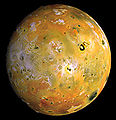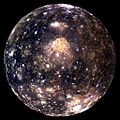Fil:The Galilean satellites (the four largest moons of Jupiter).tif

Størrelse for denne JPG-forhåndsvisningen av denne TIF-filen: 800 × 262 piksler Andre oppløsninger: 320 × 105 piksler | 640 × 210 piksler.
Opprinnelig fil (1 830 × 600 piksler, filstørrelse: 1,51 MB, MIME-type: image/tiff)
Filhistorikk
Klikk på et tidspunkt for å vise filen slik den var på det tidspunktet.
| Dato/klokkeslett | Miniatyrbilde | Dimensjoner | Bruker | Kommentar | |
|---|---|---|---|---|---|
| nåværende | 29. des. 2011 kl. 13:54 | 1 830 × 600 (1,51 MB) | Prof. Professorson | {{Information |Description=This composite includes the four largest moons of en:Jupiter which are known as the Galilean satellites. The Galilean satellites were first seen by the Italian astronomer en:Galileo Galilei in |
Filbruk
De følgende 2 sidene bruker denne filen:
Global filbruk
Følgende andre wikier bruker denne filen:
- Bruk i af.wiki.x.io
- Bruk i als.wiki.x.io
- Bruk i ar.wiki.x.io
- Bruk i ast.wiki.x.io
- Bruk i az.wiki.x.io
- Bruk i ba.wikibooks.org
- Bruk i be-tarask.wiki.x.io
- Bruk i be.wiki.x.io
- Bruk i bg.wiki.x.io
- Bruk i bn.wiki.x.io
- Bruk i bn.wikibooks.org
- Bruk i bs.wikibooks.org
- Bruk i ca.wiki.x.io
- Bruk i cs.wiki.x.io
- Bruk i en.wiki.x.io
- Bruk i en.wikibooks.org
- Bruk i es.wiki.x.io
- Bruk i et.wiki.x.io
- Bruk i eu.wiki.x.io
- Bruk i fi.wiki.x.io
- Bruk i fr.wiki.x.io
- Bruk i gl.wiki.x.io
- Bruk i he.wiki.x.io
- Bruk i hi.wiki.x.io
- Bruk i hu.wiki.x.io
- Bruk i hy.wiki.x.io
- Bruk i id.wiki.x.io
- Bruk i it.wiki.x.io
- Bruk i ja.wiki.x.io
- Bruk i kk.wiki.x.io
- Bruk i ko.wiki.x.io
Vis mer global bruk av denne filen.




